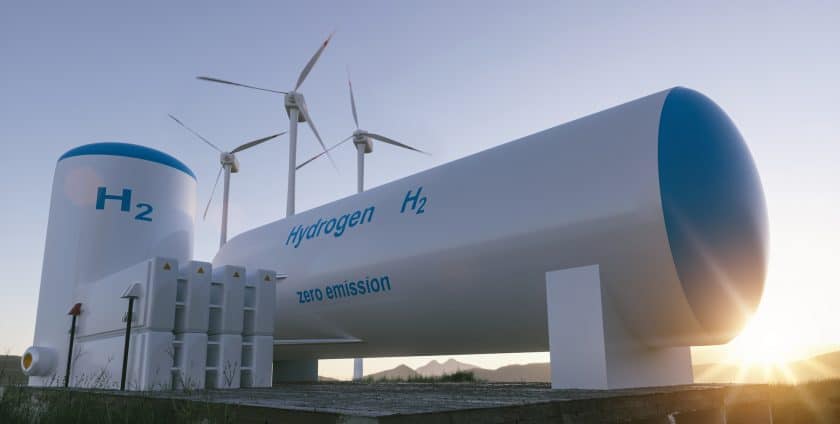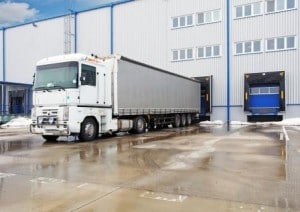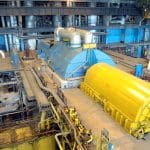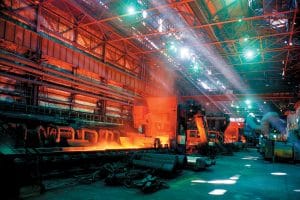
- By: admin
- 0 comment
Is hydrogen the route to Net Zero? Hydrogen is not an energy source like natural gas, rather it is a carrier of energy, somewhat like a battery. It does not occur naturally in usable quantities, but has to be manufactured.
There are seen to be four main applications for hydrogen:
- Transport – road, rail, and shipping
- Heating
- Electricity generation
- Industrial processes
Transport
Cars and Vans
By 2035 at the latest all new cars and vans sold in the UK will have to be battery powered or use a hydrogen alternative. Many people believe that we will all be driving battery powered cars in the future. But several big names in vehicle manufacturing are taking a different view.
KPMG’s Global Automotive Executive Survey 2017 discovered the 78% of motor industry executives believed that the hydrogen fuel cell electric vehicles would be the future, rather than battery electric vehicles. Their rational was the speed of refuelling process, compared to the hours required to recharge a battery electric vehicle. Toyota is committed to hydrogen powered vehicles and it recently announced the second generation Mirai model. This is despite the scaremongering around the safety of hydrogen as a fuel. Please also read our blog, Hydrogen; who says it is unsafe or is not low emissions? Since then, concerns over the availability of cobalt and rare earth metals needed for battery electric vehicles have also become a factor.
Delivery Vehicles

Refuelling time is another factor. The charging time for the Lion 8 (an urban lorry, not a long-distance articulated lorry) is 4-8 hours. Refuelling a hydrogen powered lorry is similar to that of an equivalent diesel.
However, as HGV drivers are restricted to driving 4½ hours at a time, the impact on load carrying capacity of a hydrogen powered vehicle may not be such an issue. The same cannot be said for battery powered HGVs, where the impact on load carrying capacity will be more significant. Additionally, the recharge time for such a large set of batteries would be substantial.
Hyundai announced in late 2018 that it had signed an agreement to sell 1,000 hydrogen fuel cell lorries to the Swiss commercial vehicle market. Ten Xcient trucks were shipped in July this year. The initial order has also been increased to 1,600 units.
Public Transport
In the UK, many major cities have or are introducing diesel bans that affect all but the most modern diesel vehicles. Wrightbus, a UK manufacturer made the world’s first hydrogen double decker bus in 2019. The company is a subsidiary of JCB, a manufacturer of earth moving equipment. JCB plans to have sold 3,000 hydrogen powered buses by 2024, targeting Birmingham in particular. “JCB heir plans to introduce 400 hydrogen buses to Birmingham”.
Hydrogen Infrastructure for Road Transport
Although the hydrogen pump infrastructure is currently limited, this is expect to be a temporary issue. Shell and partners are developing a refuelling network in the UK and the USA. Many logistics companies are expected to install hydrogen tanks in their depots. The price of electrolysers (the most environmentally friendly way to produce hydrogen) is expected to drop by 70% over the next decade. Using this method many large fleet owners will be able to make and store their own hydrogen on site.
Rail Travel
In the UK 42% of the network is already electrified, with the remaining 58% using diesel trains. Additionally, rail is already one of the lowest greenhouse gas emitters in transportation, so would the value of a massive overhaul of rail systems be worth it? In 2018 passenger trains alone were responsible for 2.5 million Tonnes CO2e, which is ½% of total UK CO2e emissions. However, as the country is committed to Net Zero by 2050, the question can’t be ignored.
The cost of electrifying a single kilometre of track is between £750,000 to £1m. Using hydrogen powered trains looks a good option for much of the un-electrified part of the network. The tracks would not need to be overhauled and existing diesel trains could be retrofitted with hydrogen-based power units. This would be particularly relevant in rural areas where there are fewer passengers to warrant the cost.
Several companies are working on such trains, and a train, called Hydroflex, recently made its first journey on the UK’s mainline network. Commenting on the event, the UK’s Transport Secretary Grant Shapps “[ I ] hope hydrogen trains will start taking paying passengers in 2023”.
Shipping
Although maritime shipping accounts for 3.5% to 4% of all GHG emissions, the industry was not a focus of attention at the 2016 Paris Climate Accord. In 2018 the industry discussed cutting emissions to 50% of its 2008 level by 2050. Currently seagoing vessels use either heavy fuel oil or marine diesel as fuel. Fuel cells are currently being tested to replace diesel-generator sets as they offer a number of different benefits. However, these are based on methanol, natural gas or even diesel as feed stocks. Recently, a few companies including ABB have announced plans to build fuel cells for merchant ships. Although units designed for short distance ferries should be available in the next few years, the timescales for oceangoing vessels are currently rather vague, but they could make hydrogen a route to Net Zero.
Hydrogen for Heating
Hydrogen for heating is most applicable to premises with a high temperature heating system or poorly insulated buildings. Currently, hydrogen makes up 5% of the gas in the grid. It is accepted that this could be increased to 20% before the leakage of hydrogen becomes a serious problem. Whilst this will noticeably reduce emissions from the burning of natural gas, it is a medium-term solution.
There are three main problems to be addressed before a 100% hydrogen gas grid is practical.
- To expand its use the natural gas network will have to be modified to reduce leakage of the gas.
- Different central heating boilers will be required to burn pure hydrogen.
- There will have to be an expansion of the supply of hydrogen.
The first hydrogen boilers have been produced by BAXI Heating and pilot schemes are underway.
Electricity generation

Currently the cost of producing hydrogen from renewables is between $3 – $7.50/kg., roughly double that of producing hydrogen from natural gas. However, the costs of both solar and wind power are declining and the cost of electrolysis is also projected to fall. Hydrogen will them become a viable source of energy for electricity generation at times of peak demand.
Industrial Processes
Hydrogen is used in a variety of industrial processes:
- Oil refining,
- Ammonia production, mainly for fertilizers
- Methanol production
- Steel production
Steel production in particular is seen as an area in which hydrogen can reduce GHG emissions. The direct reduction of iron ore using natural gas is well established in steel production. Using hydrogen instead would reduce the large amounts of carbon dioxide that are released, to a very low level.
Conclusion – Is hydrogen the route to Net Zero?
Hydrogen has the potential to reduce GHG emissions in many areas of the economy. Time will tell if government and commerce will rise to the challenge to make hydrogen the route to Net Zero.
Glen Winkfield
glenw@ghginsight.com
12th October 2020

